Bühne für kostenlose Technologiepräsentationen
Hall 8 Tuesday, June 13 - Hall 8 - morning session
10:30 Uhr
Overcoming Valeo’s challenges in OBC -controls testing with the latest hardware-in-the-loop innovations
 Timo Rösch
Timo RöschDirector Sales & Marketing
OPAL-RT Germany
Germany
In many automotive power electronics applications, there is a need for size-reduction of the converters and assurance of a good power quality. Hence wide-band gap semiconductors – SiC and GaN technology - with high switching frequencies of various hundreds of kilohertz are required. Testing of converter controllers for such a fast device brings significant challenges for the Hardware-in-the-Loop (HIL) Testing system. OPAL-RT therefore has developed a new version of its dedicated FPGA-based HIL Software called electrical Hardware Solver (eHS) Gen5. We share how Valeo appreciated the reached fidelity and hence was able to reach their controls testing goals.
What the audience will learn
- how the large tier1 Valeo did test innovative OBC controls
- how latest fast-switching SiC technology can be used and tested in today's power converters
- latest innovations in HIL testing technology for E-Mobility drive trains
10:50 Uhr
Euro 7 legislation proposal update and technical solutions
 Harald Kurz
Harald KurzTeam Leader Project Engineering
HORIBA Europe GmbH
Germany
At the end of last year, the EU Commissions proposed the new Euro 7 standards, to reduce air pollution from new motor vehicles to improve air quality, protect the health citizens and the environment.
To reach these goals, the standards will include emissions limits for all types of vehicles from passenger cars to buses and trucks. Additionally, non-exhaust emissions and previously unregulated pollutants will be limited as well.
This presentation will provide an overview of the latest legislation-proposal updates as well as an overview of solutions to master these new requirements, with equipment covering emissions and non-exhaust emissions measurements.
What the audience will learn
- Newest insights on the current EURO 7 legislation-proposal
- How to master new EURO 7 challenges from a technical perspective
- Outlook on how the market will develop from HORIBAs perspective
11:10 Uhr
New embedded sensor for torsional vibration analysis
 Jean-Philippe Godin
Jean-Philippe GodinSales Engineer
OPTEL-TEXYS
France
Accelerometers are widely used during NVH and durability tests to measure vibration in order to better understand phenomena linked with rotating parts.
But did you know that accurate tachometers can be the best way to extract information from rotating parts and perform complex analyses?
This is what Texys Group offers through its subsidiary Optel-Texys with the 152 series of fibre optic angular velocity sensors. The latest of these products is the 152 G7-E, which has been specifically developed for in-vehicle measurement, whether the vehicle is driving, flying or sailing.
The presentation will detail our technology and its dedicated applications.
What the audience will learn
- Details of the technology using optical sensor and fibre probe and its advantages for the analysis of rotating machines
- Presentation of the different applications and how the products answer to the customers’ requirements and environment
- An introduction to the new products developed for embedded tests – 152 G7-E
- An introduction to the new products developed for embedded tests – contactless torque measurement without on-board mass
11:30 Uhr
Frontloading verification efforts using requirements-in-the-loop
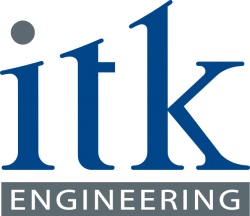 Bernd Holzmüller
Bernd HolzmüllerSenior Expert Systems Engineering
ITK Engineering
Germany
Good requirements are one of the key factors for project success. Ensuring that requirements are clear, unambiguous, and testable has a major impact on development and testing efforts and times. However, this goal is not easy to achieve. In this talk, we show how an approach called Requirements in the Loop (RiL) can identify inconsistent, incomplete, and incorrect behavior using simulation at a very early stage in the project. This creates a huge potential for saving development time and effort and, at the same time, to improve product quality.
What the audience will learn
- What is Requirements in the Loop (RiL)?
- How can RiL be used to improve requirements and detect errors?
- What are the benefits to apply RiL early in the project?
- How does RiL help testers to speed-up the test design?
11:50 Uhr
New methods and possibilities in multicomponent calibration practice
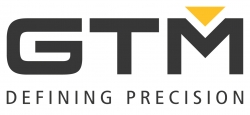 Gerhard Schulder
Gerhard SchulderDiploma Engineer
GTM Testing and Metrology GmbH
Germany
Precisely determining forces and moments in their capacity as vectors and calibrating them back to the national standard is becoming increasingly important in the world of multi-axial testing situations. The lecture considers different approaches to multicomponent calibration, developed procedures for traceability to the national standard so far and presents available measuring equipment.
What the audience will learn
- The force as a vector
- Practical challenges
- Metrological infrastructure
- Methods of calibration (measuring equipment)
- New development at GTM
12:10 Uhr
Vehicular antenna performance testing – full-vehicle OTA test system
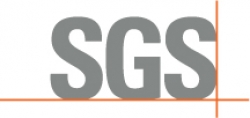 Ervin Li
Ervin LiManager SGS China Auto Connectivity Laboratory
SGS-CSTC Standards Technical Services Company Ltd
China
In-vehicle infotainment, software/hardware remote updates, C-V2X and other key features of connected vehicles all largely rely on effective vehicular antenna performance. However, vehicular antenna design has become more difficult due to the wider frequency range that needs to be covered, the limitation of vehicle appearance design and the increasing number of radars, lidars and sensors. Thus, vehicular antenna performance testing is a crucial step in the research and development process. Ervin Li will introduce the vehicular antenna performance testing process, and how SGS can deliver trusted results for your end users.
What the audience will learn
- What is OTA testing?
- The necessity of full vehicle OTA testing
- How full vehicle OTA testing contributes to vehicular antenna R&D
- SGS’s full vehicle OTA test system
- SGS’s vehicle antenna Performance Mark
12:30 Uhr
How will sustainability affect traditional safety testing?
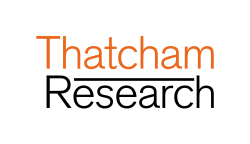 Ben Townsend
Ben TownsendChief Engineer
Thatcham Research
UK
Vehicle safety has progressed enormously since the turn of the century. Euro NCAP in particular has been highly successful in driving the development. Whilst understanding that the safety of road users remains at the top, the sustainability of vehicles and the imperative to maximise design for long term repairability, and reduce total loss is becoming increasingly important. Thatcham Research are using our considerable safety test development and execution capabilities to undertake research into vehicle damageability and repairability in medium and low severity crashes, as well as investigating the robustness of active safety systems, to support improved sustainability alongside vehicle safety.
What the audience will learn
- How sustainability may change testing protocols.
- Research being undertaken to develop new safety testing protocols.
- How new vehicle technologies are driving the need for safety testing protocol change.
Hall 8 Tuesday, June 13 - Hall 8 - afternoon session
14:00 Uhr
Fieldbus interfaces for power analyzers in e-drive test benches
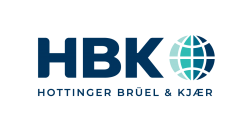 Holger Müller
Holger MüllerApplication Engineer Electric Power Testing
Hottinger Brüel & Kjaer
Germany
Different applications in R&D, Laboratory, Production and EOL testing require optimized fieldbus interfaces. Different solutions for these applications like EtherCAT or XCP oE are presented and their pros and cons are compared.
Finally, an example integration of a modern Power Analyzer into an Automation System is explained in some more details. This includes full setup of the Power Analyzer, acquisition control and result transfer with low latency.
What the audience will learn
- which fieldbus in which eMoter application
- fieldbuses for realtime and non realtime applications
- example setup of a fieldbus
14:20 Uhr
Mastering roadworthiness of ADAS and AD systems with TASC
 Dr Christian T. Erbsmehl
Dr Christian T. ErbsmehlGroup Leader Vehicle and Road Safety
Fraunhofer Institute for Transportation and Infrastructure Systems
Germany
The new method of TASC delivers the possibility for the usage of real-world accident and real-world scenario data in the whole development process of integrated ADAS and AD systems. It gives the possibility to use those scenarios as well as in simulation, virtual assessment as on real test tracks. It shows the full combination of big data-based accident research, traffic observation, automated scenario creation and conversion into current simulation formats, including the parametrization of test tracks and roboter platforms in one single solution.
What the audience will learn
- A method to use large scale accident scenario data in the whole development and assesment process of ADAS and AD-systems
- How to do a simple and effektive analysis with easy to use big data tools
- How to combine traffic and accident data in one database with common filter parameters
- How to export analysis ressults to common simulation formats and testing plattforms and roboters
- How to support the TASC approach
14:40 Uhr
Safeguarding hydrogen applications: innovative test infrastructure at IABG
 Torsten Semper
Torsten SemperHead of Testing and Simulation Hydrogen Applications / CO2-neutral Powertrains
Industrieanlagen-Betriebsgesellschaft mbH
Germany
To limit climate change, it is necessary to rapidly reduce greenhouse gas emissions. Hydrogen as an energy carrier is becoming increasingly important in this context, as it can be produced in a CO2-neutral way, stored in the long term with an attractive energy density and converted in many applications. This leads to a strong increase in development activities along the entire future hydrogen chain. These developments must be comprehensively qualified and secured for the intended use. To this end, IABG is building new test infrastructures and realigning existing test facilities and capabilities to meet the dynamically growing demand.
What the audience will learn
- Safeguarding H2-components and -systems
- Requirements for specific hydrogen test infrastructure
- IABG´s innovative hydrogen high-risk testing centers
- Detailed insight into the qualification of H2-tanks
- Overview of further test capabilities at IABG in context with hydrogen
15:00 Uhr
Dekati ePNC diffusion-charging particle counting technology as an alternative to CPC
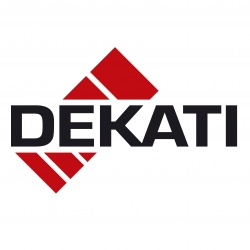 Peter Lambaerts
Peter LambaertsBusiness Development Manager, CMO
Dekati Ltd
Finland
Particle Number (PN) measurement testing has for long been conducted using Condensation Particle Counter (CPC) based technology. While accurate at low concentrations, CPCs have nevertheless several drawbacks for in-field use, such as the need for a working fluid and dilution, and sensitivity to contamination. Dekati's novel ePNC’s Diffusion-Charging (DC) particle counting technology is optimized for harsh field testing at continuously elevated emissions concentrations. This makes it a strong alternative for CPCs for demanding applications, such as Portable mission Measurements Systems (PEMS) for Real Driving Emission (RDE), and brake and tire wear measurements - as shown in results of recent studies.
What the audience will learn
- New technology for measuring automotive engine particle emissions
- New technology for measuring automotive non-engine particle emissions, such as brake and tyre wear emissions
- Results of new case studies conducted in the field of engine and non-engine particle emissions
15:20 Uhr
Testing capabilities for electric drive units, battery packs and HV systems
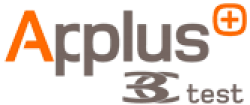 Abrahan Marquez
Abrahan MarquezHV & Battery Operations Manager
Applus+ Laboratories
UK
This talk details the different capabilities and test setup available through Applus+ Laboratories for the testing of the key components in electric vehicles: the electric drive unit, the battery pack and other related HV systems, such as the battery management system or the Inverter.
It will highlight key standards, tests, and test conditions for each of these components. For example, how our EV motor dyno can be used to provide accurate data on EDU EMC tests, improving system to vehicle-level correlation. Or the benefits of using our single 200 kN shaker combined with an 11 m3 climatic chamber to test battery packs.
What the audience will learn
- The specification and capabilities of the EV Motor Dyno available through Applus+ Laboratories for the EMC testing of EDUs
- The different regulations and tests applicable to homologate batteries
- The testing capabilities required to simulate rough environmental conditions battery packs, with adequate security measures.
15:40 Uhr
Unlock the full potential of your battery test system.
 Markus Demaria
Markus DemariaProduct Manager
HMS Networks
Germany
The "intelligence" of the battery is located in an ECU, the Battery Management System (BMS). Due to manufacturing robustness of batteries every individual battery is tested at the end of the production line. For this, the BMS controlling the battery must be connected to the automation system so that measurement and calibration data can be exchanged. Join us to find out how one of the market leaders in industrial communication technology, HMS Networks with brands such as Anybus, Ewon or Ixxat, solves critical communication problems in battery testing.
What the audience will learn
- Learn about efficient communication solutions for traction battery test sytem.
- Learn about connecting your traction battery to your automation system.
- Learn about simulating signals of ECUs not present at test time.
Hall 10 Tuesday, June 13 - Hall 10 - morning session
10:30 Uhr
The new mobility paradigm shift: a coming tsunami of change
 Sam Coleman
Sam ColemanChief Marketing Officer
Stringo
Sweden
Often, when we're in the midst of a paradim shift, we're wholly unaware of the impact, the level of change that's coming and how fundamentally different our world will be as the shift gathers pace and the paradigm embeds as the new normal. Mobility is undergoing such a shift becoming the next large paradigm shift after the digitalisation revolution that changed our lives in evident ways. How will decarbonisation, ADAS, Mobility as a Service and other aspects of the shift play out and iterate both innovation wise but for safety and testing players?
What the audience will learn
- The idea of a paradigm shift and how to realise you're in one
- Seeing mobility in a far broader context of disrruption rather than just cars
- Seeing the limitation of our predictive industrial models
- Understanding what this means for the testing business and what those new customers will demand
- Taking all this in and understanding that the automotive and mobility sector is in an incredible, exciting historical moment
10:50 Uhr
Automotive ethernet architecture conformance
 Marty Gubow
Marty GubowTSN Program Manager
Keysight Technologies
USA
Keysight Technologies will discuss ethernet architecture for in-vehicle networks (IVN). Topics will include testing time synchronization (802.1AS), traffic shaping (802.1Qav,802.1Qbv) and frame pre-emption (802.1Qbu). In addition, we will discuss testing in an environment utilizing L2 encryption (MACsec).
What the audience will learn
- Ethernet Time Synchronization
- TSN Time Sensitive Networking
- Credit Based Shaper
- Time Aware Shaper
- MACsec encryption
11:10 Uhr
Road noise engineering: state-of-the-art methodology for characterizing tires and suspensions
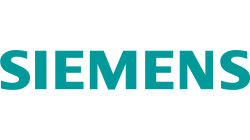 Eric Sorber
Eric SorberBusiness Developer Automotive NVH Testing
Siemens Digital Industries Software
Belgium
Is it possible to predict the road noise performance of a virtual vehicle prototype from component test bench data? Component-based Transfer Path Analysis (C-TPA) promises to do exactly that, answering to the industries increased focus and pressure on road noise engineering due to vehicle electrification. This session will explain our state-of-the-art methodology for characterizing two particularly challenging components (tires and suspensions) in their dynamic operational boundary conditions. Next, hybrid virtual vehicle prototypes will be created by connecting these test-based component models to simulation-based vehicle body models for objective and subjective road noise assessment in early design stages.
What the audience will learn
- How to characterize tires and suspensions in dynamic operational boundary conditions for accurate road noise predictions
- How to frontload road noise engineering by combining test- and simulation-based components in virtual vehicle prototypes
- Where to exploit synergies of objective and subjective road noise predictions in other NVH engineering domains
11:30 Uhr
The positive network effect on NVH testing
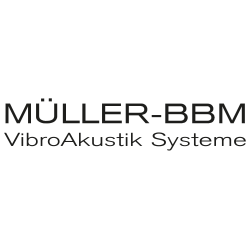 Dr Dejan Arsic
Dr Dejan ArsicBusiness Development Network and Cloud Solutions in Testing
Müller-BBM VibroAkustik Systeme GmbH
Germany
Adapting the network effect to NVH testing, especially in the development process of e-motors, offers a range of advantages. Various aspects and different groups, are usually involved in the development process, e. g. structural testing, acoustics, e-power and simulation. Alterations in any of these fields usually result in impacts on one of the other topics. Optimizing the NVH properties for example might have a negative impact on motor performance. In contrast the increase of performance also influences the NVH characteristics of the motor. Using a network-based approach, enables communication with specialized systems rather than trying to create an all-purpose system.
What the audience will learn
- How to test in an eco system with various sources for physical data
- The influence of E-Power on NVH and vice versa
- Workflow oriented measurements
11:50 Uhr
Closing a critical coverage gap in ADAS/AD camera validation
 Daniel Riedelbauch
Daniel RiedelbauchChief Solutions Manager
NI (National Instruments)
Germany
Testing production release software for camera-based advanced driver assistance systems is difficult due to the integrated safeguards for meeting functional safety requirements. To satisfy the validity checks of the device under test and stimulate behaviors similar to test driving, NI provides dedicated hardware and software for emulating image sensor functionality on three different layers, helping to avoid the need for a dedicated testing mode software build for validation, known as HIL-mode. This enables validation testing based on production software for vision ECUs, which closes a coverage gap that has existed since the introduction of ‘HIL-mode’ using pre-release software.
What the audience will learn
- Why ADAS Camera Validation is a Challenge
- How to enable ADAS Camera Validation using ECU Release Software
- Conclusion
12:10 Uhr
Robust highspeed and precision torque measurements flanges for test benches
 Dr Stephanie Manner
Dr Stephanie MannerManaging Director
MANNER Sensortelemetrie GmbH
Germany
The development and optimization of drivetrains concepts has become very competitive – efficiency is key. Highly accurate and robust torque measurements flanges that withstand highspeed and accelerations to determine the power flow are needed.
Speed determination is easy, but the high-precision dynamic acquisition of the torque is much more demanding. The difference between input and output torque measurement is so minimal but crucial for the development process.
MANNER Sensortelemetrie will introduce various innovative solutions to challenges manufacturers face. We will present the new generation of measurement flanges to customer-specific flanges, dual-range sensors and compensation options for temperature and other forces.
What the audience will learn
- Typical scope of applications for measurement flanges
- Torque measurement solutions for high rpm drive lines
- Advantages of the MANNER measurement flange technology
- Why high precision measurements are the key for successful engineering.
- How Manner technology achieves accuracy over a large temperature range
Hall 10 Tuesday, June 13 - Hall 10 - afternoon session
14:00 Uhr
ADwin real-time-system in teststands, end-of-line, AI and HIL applications with Simulink/ADbasic/C
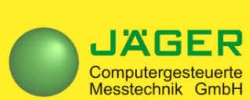 Heinz Beimert
Heinz BeimertApplication & Sales Manager
Jaeger Computergesteuerte Messtechnik Gmbh
Germany
ADwin real-time systems combine fast real-time, models with data acquisition, analysis, control and AI from kHz to MHz range.
The systems are available as standard devices with various flexible options, or as I/O customized versions for OEM applications. OEM versions are scalable in any number, analog&digital I/Os, interfaces like CAN/CAN-FD, SENT, LIN, PROFIBUS/PROFINET, etc.
All ADwin have a local RT CPU for fast and precise real-time applications with RT software ADbasic/C or Simulink.
Applications can be found in test bench monitoring and control, end-of-line testing and HIL models for
ECUs, sensors, actuators, brakes, shock absorbers, engines, vibration test bench control.
What the audience will learn
- Presentation of a user friendly real-time system, programmed in Simulink and/or ADwin/C in cooperation with ADsimDesk GUI and data storage.
- Deterministic RT function, kHz to MHz range in test applications on a multitasking system with a Jitter in ‘ns’-range only.
- AI functions on ADwin in RT using ADkirk. Train Neuronal Networks for ADwin and run them in fast RT.
- PC user interfaces to ADwin from Python, .NET, C/C++/C#, Matlab, LabView, ADsimDesk, and many others
- Automotive busses such as CAN/CAN-FD, SENT, PSI5, SPI, RT-Ethernet for mixed-mode applications in combination with analog&digital channels.
14:20 Uhr
How to save money and time with test catalogs
 Hartmut Jürgens
Hartmut JürgensProduct Manager
dSpace GmbH
Germany
For some function domains of ECUs, regulations or standards apply. Accordingly, a basic set of tests must be applied to proof conformity. In many cases, according tests need to be developed by many different customers with significant efforts.
The utilization of generic software tools as products is common sense. Minor adaptions with low effort enable efficient use for specific use cases. With the example of smart charging, it can be demonstrated how instant testing with a predefined test catalog saves money and time.
What the audience will learn
- Differentiation between Software -tools and -content
- Benefits of generic and specific product features
- Save money and time by using test cataloge products
14:40 Uhr
Drive ahead of the curve: dynamic DIL simulators redefined
 Gavin Farmer
Gavin FarmerCommercial Manager
Dynisma Ltd.
UK
From F1 to Future Mobility, the way a vehicle moves its driver or rider, and the way they respond to that movement, is key to success. Dynisma embraces bandwidth and latency challenges to create driving simulators with a much tighter loop between the vehicle models and the drivers or riders. The presentation describes a new approach to motion simulation with examples of what this is enabling engineers to study and develop on road and track.
Includes case studies on DMG-X - a new simulator for ride and NVH, and a new simulator for lane change manoeuvres.
What the audience will learn
- What role do bandwidth, latency and fidelity play in dynamic DIL simulation?
- How we quantify simulator requirements for developing vehicle ride and NVH
- Introducing DMG-X - the ultimate tool for ride evaluation and development
- What Dynisma's high bandwidth, low latency and massive excursion simulator bring to lane change simulation
- How to specify and order a Dynisma simulator
15:00 Uhr
Shaker extension control strategies for large test objects
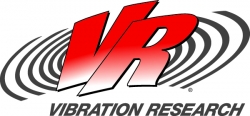 Peter Sikora
Peter SikoraHead of Training & Accreditation
Vibration Research Europe GmbH
Germany
Test objects often exceed the size of conventional shaker clamping tables. The parts of the test object that protrude from the table must be "intercepted" with an elaborate fixture and corresponding control strategy to eliminate undesirable effects. These fixtures are typically heavy and larger than the protruding test parts and generate unwanted interference.
New developments by shaker manufacturers, combined with a sophisticated control strategy, show a trend toward constructing vibration tables with external supports known as extensions. Theoretically, external bearing-guided extensions allow clamping over a large area. What control strategy makes sense, and what does it look like in practice?
What the audience will learn
- Test objects that exceed conventional shaker clamping tables require special fixtures and control strategies.
- Shaker manufacturers are showing a trend toward vibration tables with extensions.
- There are multiple control strategies for shaker tables with extensions that vary in effectiveness.
15:20 Uhr
How to test A2B audio devices and networks efficiently?
 Nikita Prorekhin
Nikita ProrekhinSenior Software Developer
NOFFZ Technologies
Germany
The Automotive Audio Bus A2B® technology developed by Analog Devices is widely used in modern vehicles nowadays. It reduces the complexity, cost, and weight of audio systems and goes beyond pure audio transmission. This concerns Hi-Fi amplifiers/speakers, head units, eCall systems, microphones, vibration/noise suppression units, actuators or sensors.
In this presentation, we will cover the testing aspects of the A2B® bus and how you can efficiently test a single A2B® device or even complete A2B® network during development, validation and production stages. We will look at NOFFZ ITD 1024 test device and how it can be integrated into your workflow.
What the audience will learn
- Test approaches for A2B® Audio Bus
- How to test A2B® audio devices and sensors
- Record and Playback system and synchronization
15:40 Uhr
How to manage the continuous changes in BMS HIL testing
 Stephan Schmidt
Stephan SchmidtGroup Manager Consulting & Services North
MicroNova AG
Germany
With a focus is on control units of high voltage batteries and their software, we can see a steady increase in requirements. Different markets with their respective legal requirements have to be met. If battery cells from different manufacturers are installed, the variance increases again and with it the testing effort. How can this problem be countered with intelligent method changes?
How can the commissioning times of the test infrastructure be optimized?
Standards such as ISO 26262 or SOTIF (ISO 21448) require additional tests. How can the conformity of the test systems and the models used with ISO 26262 be ensured?
What the audience will learn
- Standards-compliant testing of battery control units with a major focus on functional safety
- HiL test and virtual test
- Efficient testing for earlier market maturity
